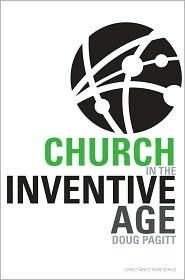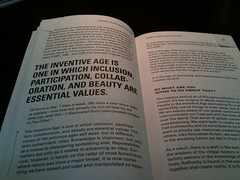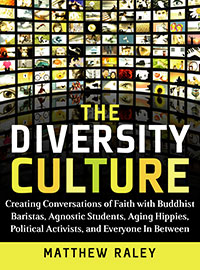As part of the Blogger program BookSneeze, I was excited to pick up The Quotable Chesterton by Kevin Belmonte. In some ways, he’s like a Bob Dylan, everyone quotes him, but he’s not as listened to/read like he should be.
GK Chesterton was a theologian that we, evangelicals should be reading more of. We don’t for a number of reasons. One is that he isn’t the easiest to read. Two, is that we have hidden him under CS Lewis (who loved and quoted Chesterton extensively). He said, “Chesteron had more sense than all the other moderns put together”.
It’s this realization that Kevin Belmonte offers The Quotable Chesterton. He writes in the intro that Chesterton was quite the star in the early 20th Century. The Times tracked his life and writing throughout his career, even putting his death on Page 1 back in 1936. George Bernard Shaw considered him a “colossal genius”, F. Scott Fitzgerald and Ernest Hemingway found ways of including his writing in their books like The Man Who Was Thursday and Into Three-Day Blow.
Everyone took notice of his faith, including the New York Times that wrote this of his legacy, “Mr. Chesterton talks about God because God is the most interesting subject for conversation that there is.” His most popular book Orthodoxy, is considered among the greatest of Christian classics.
Here are a few of the shorter quotes that I enjoyed from:
“Christianity is always out of fashion because it is always sane; and all fashions are mild insanities.”
“He is a very shallow critic who cannot see an eternal rebel in the heart of a conservative.”
“Without education, we are in a horrible danger and deadly danger of taking educated people seriously.”
“The riddles of God are more satisfying than the solutions of man.”
Being a book on quotes, it’s not exactly reading, but more of a resource or in my case, a devotional (like Proverbs). It’s in this way that books like these are of value. So if you are “C.S. Lewised Out” or in need of some “new old ideas”, or better, want to begin reading an often-overlooked brilliant literary and theological mind, pick up The Quotable Chesterton: The Wit and Wisdom of G..K. Chesterton by Kevin Belmonte.
 “In the last 200 years, American culture has moved through three distinct ages – the Agrarian Age, the Industrial Age, and the Information Age – and is heavily engaged in a fourth – an era I have dubbed the Inventive Age. With each of these ages has come a shift in what we think, what we value, what we do, and how we do it” (p 4).
“In the last 200 years, American culture has moved through three distinct ages – the Agrarian Age, the Industrial Age, and the Information Age – and is heavily engaged in a fourth – an era I have dubbed the Inventive Age. With each of these ages has come a shift in what we think, what we value, what we do, and how we do it” (p 4). It’s true that I am biased towards appreciating Doug’s work (everyone is biased towards something you know). As one who spends a lot of time working on the problem of why our churches are shrinking, Pagitt is among the few that have insights and answers worth pursuing. Perhaps one of my greatest admirations of him is that he is truly not afraid to question. I think I can only say that about a handful of people. That said, this does not mean that every question he asks is a good one, but many of them are. So when Doug asks, What should the Church look like in the future, I’m interested in that conversation.
It’s true that I am biased towards appreciating Doug’s work (everyone is biased towards something you know). As one who spends a lot of time working on the problem of why our churches are shrinking, Pagitt is among the few that have insights and answers worth pursuing. Perhaps one of my greatest admirations of him is that he is truly not afraid to question. I think I can only say that about a handful of people. That said, this does not mean that every question he asks is a good one, but many of them are. So when Doug asks, What should the Church look like in the future, I’m interested in that conversation. By the way,
By the way,  I’ve been reading the new Brian McLaren book,
I’ve been reading the new Brian McLaren book, 
 Here’s the book summary copied from the
Here’s the book summary copied from the 





Recent Comments